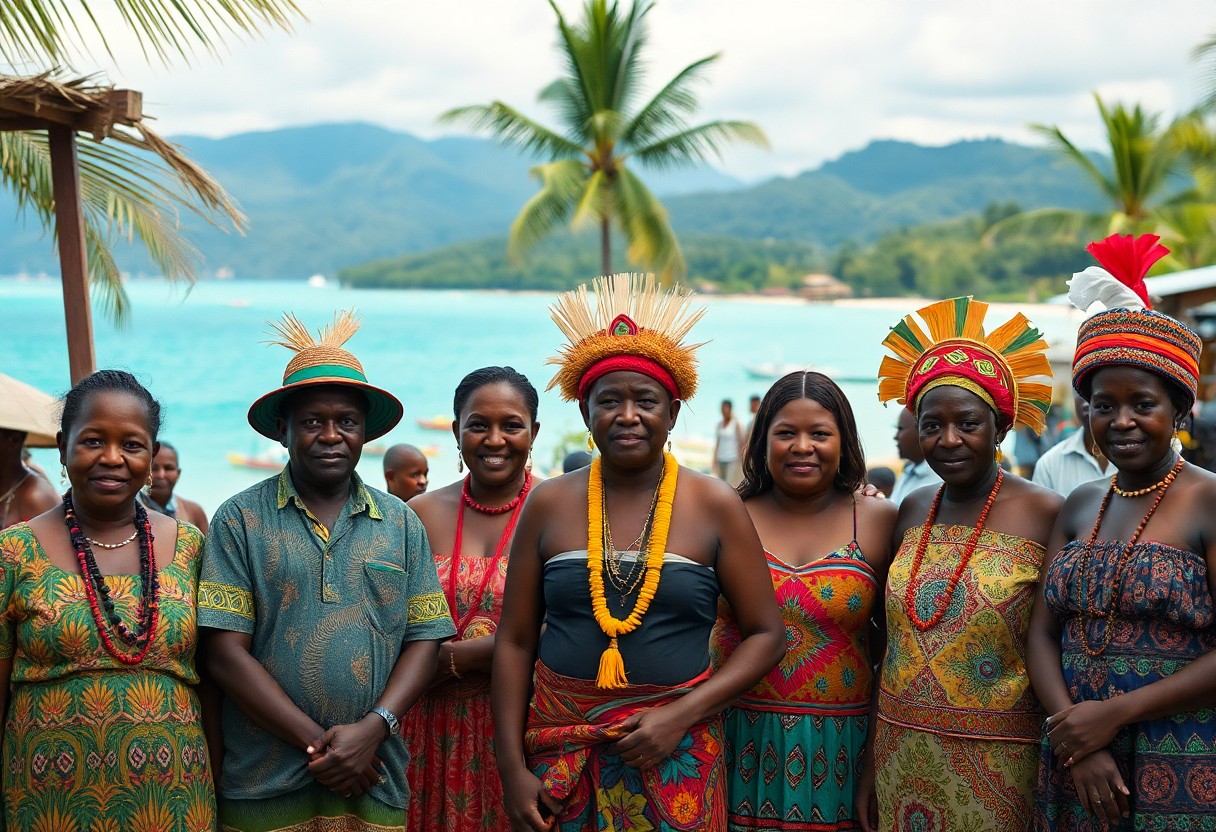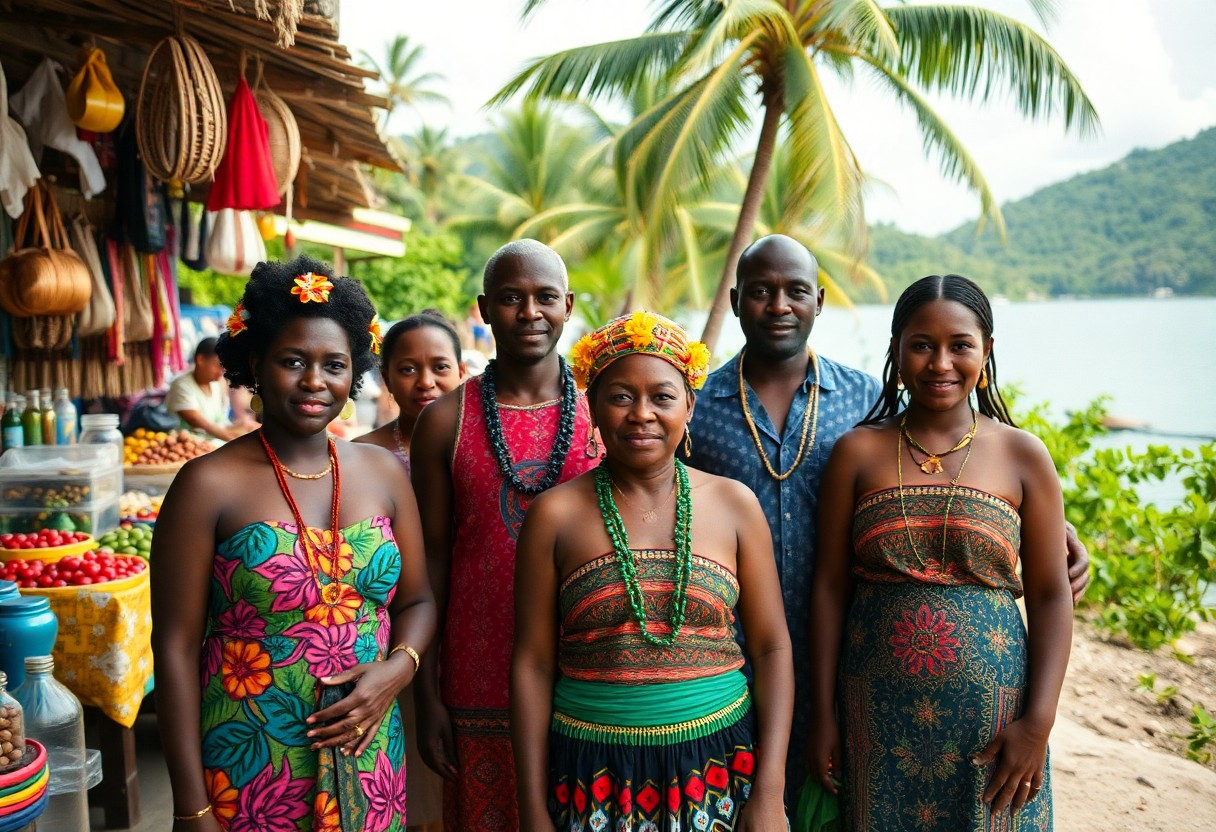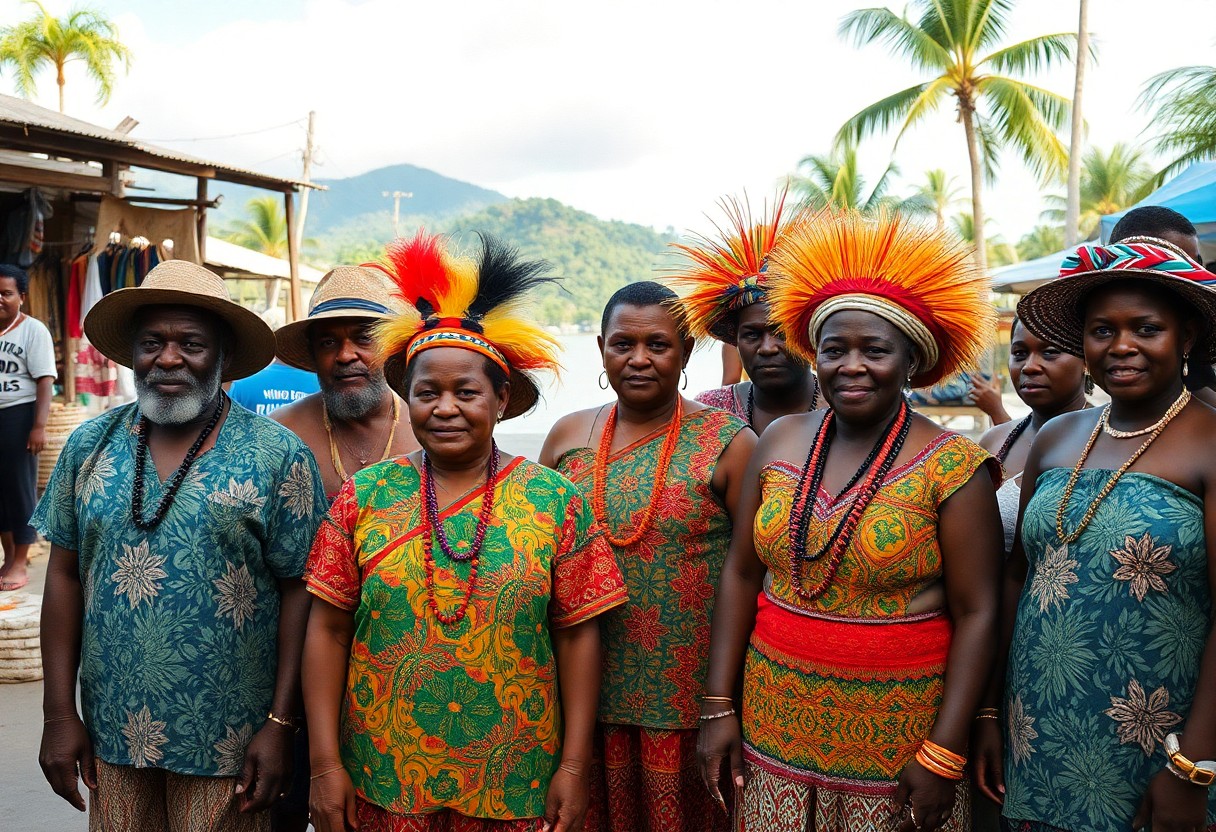The Hispanic heritage of Belize intricately intertwines with its Caribbean roots, resulting in a rich cultural tapestry that cannot be easily categorized. By examining the vibrant identity of the Belizean people, you will discover a dynamic blend of ethnicities. As you explore Belize’s diverse demographic landscape, you will encounter a remarkable population composed of Creole, Garifuna, Maya, Mestizo, and various other unique backgrounds. This exploration will enhance your understanding of Belizean identity, highlighting that its citizens are not simply Hispanic or Caribbean, but rather part of a complex society that transcends conventional racial and cultural boundaries. The historical narrative encompassing colonization, migration, and cultural intermingling has forged a national identity that is both inclusive and continually evolving.

Dive Deep into the Rich Ethnic Diversity of Belize
Belize boasts a remarkably diverse population, with its ethnic composition reflecting a complex history of migrations and cultural exchanges. In this vibrant nation, you will encounter an array of ethnic groups, each contributing uniquely to the national identity. The population consists of various communities, including Mestizos, Creoles, Maya, Garifuna, Mennonites, and other smaller groups, collectively crafting a multicultural landscape that is both colorful and dynamic, defining the essence of Belizean society.
Uncovering the Significance of the Creole Community in Belize
The Creoles emerge as one of the most important ethnic groups in Belize, tracing their lineage back to African slaves and British settlers. Recognized as a foundational community within Belizean culture, they predominantly reside in urban centers like Belize City. Their language, Belizean Creole, is widely spoken, forming a vital part of the nation’s rich linguistic heritage and reflecting their historical journey and cultural significance. Understanding the Creole experience provides insights into the broader narrative of Belizean society and its evolution.
The Cultural Contributions and Heritage of the Mestizo Population
The Mestizo population, primarily composed of individuals of mixed Spanish and Indigenous ancestry, represents the largest ethnic demographic in Belize. Predominantly found in the northern and western regions, they infuse a wealth of cultural traditions and practices from neighboring Mexico and Guatemala into Belizean society. With approximately 50% of Belize’s inhabitants identifying as Mestizo, their influence is significant, impacting diverse aspects of the country, such as agricultural methods, culinary traditions, and the broader cultural landscape. Their historical migration patterns and economic contributions have been instrumental in shaping modern Belizean society.
Preserving the Rich Cultural Heritage of the Maya Communities
The Maya communities are regarded as one of the oldest indigenous populations in Belize, with deep historical roots in the region. You will encounter three primary groups: Q’eqchi’, Mopan, and Yucatec, each preserving unique cultural practices and languages. The Maya hold immense archaeological and cultural importance, evidenced by their retention of traditional agricultural techniques and spiritual rituals, which continue to be vital components of Belizean heritage today. Their ongoing contributions to the cultural richness of Belize are a testament to their resilience and adaptability.
Honoring the Unique Identity of the Garifuna People
The Garifuna community, characterized by its distinctive Afro-Indigenous Caribbean heritage, arrived in Belize in the late 18th century. Primarily settled along the southern coastal regions, they maintain a unique cultural identity that enriches Belize’s cultural tapestry. The Garifuna culture is celebrated for its vibrant music, dance, and language. Their annual celebrations, particularly the lively Settlement Day on November 19th, exemplify their cultural pride and resilience, showcasing their significant contributions to Belize’s multicultural narrative while fostering an appreciation for their rich heritage.
The Economic Impact of Mennonite Communities in Belize
No comprehensive discussion of Belize’s ethnic groups would be complete without acknowledging the Mennonites. Primarily located in the Cayo and Toledo districts, these communities are renowned for their commitment to agriculture and traditional lifestyles. With European origins, Mennonites have established substantial agricultural settlements in Belize, playing a crucial role in the country’s farming sector and significantly contributing to its economic development. Their practices and values provide a glimpse into the diverse agricultural methodologies that sustain Belize’s economy.

Examining the Historical and Cultural Influences Shaping Belizean Identity
The multifaceted identity of Belize has been profoundly shaped by numerous historical influences that intertwine diverse cultural threads, contributing to a richer understanding of this remarkable nation. As you delve into Belize’s past, you will encounter a vibrant tapestry of indigenous, European, African, and Caribbean influences that have collectively shaped its unique national character. Understanding these influences provides valuable insights into the complexities of Belizean identity.
The Lasting Impact of Spanish Colonization Attempts on Belize
Throughout history, Spanish conquistadors made several attempts to claim Belize, yet their efforts were consistently met with fierce indigenous resistance and the region’s challenging territorial conditions. You may find it fascinating that, despite its geographic proximity to Spanish-speaking territories, the colonization of Belize by the Spanish was largely unsuccessful, paving the way for a different cultural evolution characterized by a unique blend of influences.
The Transformative Role of British Colonial Presence in Belize
The British colonization of Belize fundamentally reshaped its demographic and cultural landscape. You will discover that British colonial rule laid the foundation for modern Belizean society, instituting administrative systems and linguistic patterns that resonate even today. This influence extended well beyond governance, affecting social hierarchies, economic frameworks, and cultural practices, transforming Belize from a region of sporadic settlement into a structured colonial entity, thereby setting the stage for its future national identity.
Enriching the Belizean Cultural Landscape Through Garifuna Heritage
During the 18th and 19th centuries, the arrival of the Garifuna people introduced a vibrant Afro-Indigenous culture that significantly enriched the nation’s ethnic diversity. You will come to appreciate how their presence added another dimension to Belize’s complex cultural mosaic. The contributions of the Garifuna extend beyond demographics; their distinct cultural practices, language, and traditions have become integral to the national narrative, representing resilience, cultural adaptation, and the preservation of their heritage.
Exploring Languages and Regional Influences in Belize
To fully comprehend Belize’s multifaceted identity, it’s essential to explore its linguistic diversity and regional affiliations. English serves as the official language, a reflection of its unique British colonial past, while Spanish, Kriol, and various Mayan languages coexist harmoniously. This linguistic richness will reshape your perception of Belizean identity, revealing a multifaceted cultural landscape that resists simple categorization and highlights the interplay of different cultural influences.
Understanding Caribbean Influences That Shape Belize’s Cultural Identity
At the core of Belize’s regional identity lies a deep-seated Caribbean cultural heritage. Caribbean influences permeate the fabric of Belizean society, particularly through shared linguistic patterns, music, and social customs. You will find that the Garifuna and Creole communities are vital contributors to this regional alignment, creating a vibrant and diverse cultural mosaic that captures the essence of Belize’s identity and showcases the richness of Caribbean heritage.
Strengthening Cultural Connections with Latin America Through Exchanges
The connections between Belize and its Latin American neighbors are deeply rooted in geographical proximity and shared historical experiences. Spanish-speaking communities and cultural interactions with Guatemala and Mexico shape the understanding of Belize’s complex identity. You will observe how these connections transcend traditional geographical boundaries, creating a rich tapestry of cultural exchange. Furthermore, Belize’s economic partnerships, regional trade agreements, and cultural collaborations with Central American nations reinforce these ties, illustrating how Belize’s membership in organizations like SICA (Central American Integration System) strategically positions it within the Latin American context, while still celebrating its unique multicultural identity.

Defining the Contemporary Belizean Identity in a Global Context
Today, many Belizeans navigate a richly layered cultural landscape that defies straightforward categorization. Your perception of Belizean identity should embrace its intricate, multifaceted nature. With approximately 52% of the population identifying as Mestizo, 25% as Creole, and significant representations from Maya, Garifuna, and other ethnic groups, you will discover that Belize embodies a unique fusion of Hispanic, Caribbean, and indigenous cultures. This diversity challenges conventional ethnic labels and encourages a deeper appreciation of the nuanced cultural tapestry that defines modern Belizean identity.
Exploring the Diversity of Self-Identification Among Belizeans
Among the citizens of Belize, self-identification is highly varied and reflects the country’s rich heritage. You will find that many individuals embrace multiple cultural identities at once. Surveys indicate that while some individuals primarily identify as Hispanic or Caribbean, an increasing number of Belizeans recognize themselves as part of a broader, more inclusive national identity that transcends traditional ethnic boundaries, thereby highlighting the complexity of self-identification and its role in shaping a cohesive national narrative.
Embracing Multicultural Acceptance and Unity in Belize
At the core of Belize’s cultural landscape is a remarkable spirit of mutual respect and celebration of diversity. You will observe that national holidays, festivals, and cultural events serve to showcase the rich traditions of various ethnic groups, promoting understanding and unity across diverse communities. In addition to formal celebrations, your experience in Belize will unveil a deep-rooted commitment to multicultural harmony. The education system, media, and social interactions actively foster cultural understanding, with schools teaching multiple languages and cultural histories. This approach emphasizes how Belizeans view their identity as a strength rather than a divide, cultivating a uniquely inclusive national culture that embraces differences and fosters a sense of belonging for all.
Embracing the Complexity and Richness of Belizean Identity
Ultimately, you will find that Belizean identity is a complex construct that defies simple categorization. By exploring Belize, you will uncover a rich cultural tapestry where Hispanic, Caribbean, and indigenous influences blend seamlessly. You can appreciate how Belizeans embrace a unique national identity that moves beyond traditional ethnic labels. Your journey reveals that Belizean heritage is a vibrant fusion of African, Maya, Creole, Garifuna, and European roots. As you delve deeper, you will understand that Belize represents a multicultural society where diversity is not merely tolerated but celebrated as a fundamental characteristic of national identity. Your perspective evolves from viewing identity as a binary choice to recognizing it as a dynamic and interconnected spectrum of experiences and communities.
Common Questions About Belizean Identity Answered
What Ethnic Groups Are Present in the Belizean Population?
Belize features a diverse population that includes Creole, Garifuna, Maya, Mestizo, Afro-Caribbean, and European descendants. This multicultural composition reflects the country’s intricate historical and geographical influences, creating a unique national identity that transcends simplistic ethnic categorization and embraces the richness of its cultural heritage.
Can Belizeans Be Classified as Hispanic?
While many Belizeans have Hispanic heritage, particularly within the Mestizo population, not all Belizeans identify as Hispanic. The nation’s cultural landscape encompasses multiple ethnic groups with distinct linguistic and cultural backgrounds, making Hispanic identity just one facet of Belize’s larger national identity and cultural diversity.
How Does Belize Connect with Caribbean Cultural Traditions?
Belize maintains strong Caribbean connections through its Creole and Garifuna communities, shared linguistic patterns, and historical maritime interactions. The country’s geographic location and cultural practices firmly anchor it within Caribbean cultural frameworks, despite its geographical positioning in Central America, illustrating the complexities of its cultural identity.
What Are the Language Dynamics Within Belize?
English remains the official language of Belize, accompanied by Spanish, Kriol, Garifuna, and various Mayan languages. This linguistic diversity exemplifies the nation’s complex cultural identity, blending Caribbean, Central American, and colonial linguistic influences to create a rich tapestry of communication.
How Do Belizeans Perceive Their National Identity?
Belizeans generally embrace a multifaceted identity that integrates Hispanic, Caribbean, indigenous, and global cultural elements. Most citizens view their nationality as a rich, nuanced blend rather than a singular, exclusive ethnic classification, reflecting the complexities of their shared heritage.
The Article Belizean Identity: Are Belizeans Hispanic, Caribbean, or Both? appeared first on Belize Travel Guide
The Article Belizean Identity: Exploring Hispanic and Caribbean Roots Was Found On https://limitsofstrategy.com


No responses yet